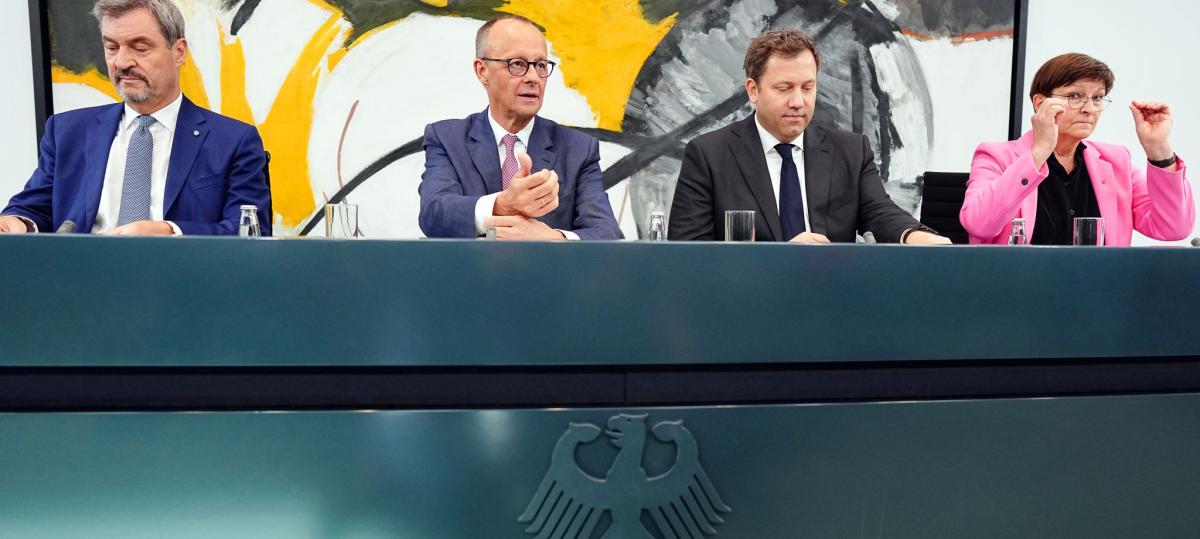62% of Americans identify themselves as Christians

The number of Americans identified as Christians has been declining for years, but this figure seems to be giving signs of slowdown, according to a new study by the Pew Research Center published Wednesday.
According to the study of religious panorama, 62% of Americans in adulthood call themselves Christians. Although this is a significant decline compared to 2007, when 78% of Americans were identified as Christians, the Pew Center concluded that the Christian population has maintained a relatively stable level since 2019.
According to the study, the rapid growth of people who do not identify with any religious beliefs has also been stopped, already staying at a temporarily uniform level. About 29% of Americans in adulthood are identified as non -religious, among them 5% atheists.
« It is surprising to notice this period of stability in religious belief in America after a long decline period, » said Gregory Smith, one of the co -authors of the study of the Pew Center. « Something we do not know for sure is whether these signs of short -term stabilization will prove to be a prolonged change for the country's religious trajectory. »
In some ways, the United States continues to be generally spiritual. Many Americans have views of the supernatural, with 83% of them who believe in God, or a universal spirit, and 86% who believe that people have a soul. About 7 out of 10 Americans believe in paradise, hell, or both.
Young people are fewer religious than the old
Despite this widespread tendency of spirituality, there are also signals for a future religious decline. The study of the Pew Center revealed for example a large gap. 46% of young people in adulthood are identified as Christians, compared to 80% of the older ones. Young people are also likely three times not to identify with any religious grouping than older groups.
« These types of generations are a large part of what has enabled the long -term decline for religious belief in America, » said Mr. Smith. « While generations of many religious people have passed, they have been replaced by generations of young people who are fewer religious than their parents and grandparents. »
Michele Margolis, a political researcher at the University of Pennsylvania who did not play a role in the study, has considered her religion.
Young people who reach adulthood often turn away from faith. « Then, when they get married and have children, this is a time when researchers notice that faith is more likely to become important, » said Ms. Margolis.
She says the question of the future is whether young American young people will firmly reject religious organizations, or whether some of them will return to their belief with age.
PEW center data does not show that for the period 2007-2024, Americans have become more religious with age.
Mr. Smith says that « something needs to change » to stop the long -term decline of faith in America, whether by making the most believing population as it grows in age, or with younger generations that become more believers than their parents.
How is politics intertwined with religious identity
The long -term decline in the Christian faith in the United States and the growth of non -religious persons is present in all segments of the population, regardless of tradition, gender, race, ethnicity, education and the region in which they are located. But according to the study of the Pew Center, this tendency is much clearer among the political liberals. The study shows that 51% of liberals do not say they belong to any religious belief, a 24% increase compared to 2007. Only 37% of American liberals are identified as Christians, a decline from 62% in 2007.
Penny Edgell, a sociologist at the University of Minnesotas who served as an adviser to study the Pew Center, says religious and political positioning is in line with whether people « support traditional, party and gender structures ».
Ms Edgell also points out that African-Americans challenge the notion that all Democrats are less religious than Republicans.
« A higher percentage of African Americans are Democrats, but the level of their religious involvement is still really high, » said Ms. Edgell. « This is about how religious institutions and politics have been intertwined in historically unique ways for different groups. »
Nearly 7 of the 10 African-Americans Protestant African told the Pew center that faith was very important to them, almost the same level as evangelicals and members of the Church of Jesus Christ of Latter-day Saints. But African-American Protestants are more likely to be identified as Democrats (72%), while evangelists and others are more likely to be identified as Republicans (with 70%and 73%).
PEW Center Study covers other beliefs
The previous study of the religious panorama had been conducted ten years ago, with the aim of studying data that does not cover the census in the United States.
The new study found that most immigrants to the United States are Christians (58%), but that they also follow the same growing tendency for non -involvement in religious organizations – a quarter of young people born abroad and already found in the US, say they do not belong to any religious belief.
The number of Americans belonging to other faiths has increased, though they are a small part of the population (7%). These include 2% that are Jews and 1% who are Muslims, Buddhists and Hindu.
According to the Pew Center study, from American Christians of adulthood, 40% are Protestants and 19% are Catholics. The remaining 3% includes members of the Church of Jesus Christ of Latter -day Saints, Orthodox Christians, Jehovah's Witnesses, and other smaller Christian groups.
According to the study, the two largest Protestant denominations continue to be southern Baptist Conventions and the united Methodist Church – although both organizations have lost many members since their first study held in 2007.
The study of the Religious Panorama of the Pew Center was conducted with surveys in English and Spanish in July 2023-March 2024, with a population of 36,908 people scattered throughout the United States. The error limit is estimated at minus or plus 0.8%./VOA/





